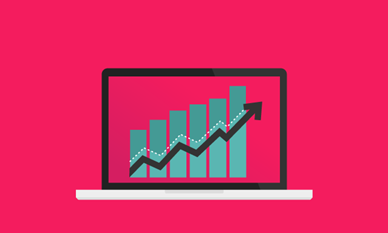'It won't happen to me': How advisers can overcome Optimism Bias
People tend to be overconfident when it comes to certain risks, particularly their own health and wellbeing, but this is something advisers will be all-too familiar with, writes Greg Levine, Chief Operations and Growth Officer, Vitality.
The belief that “it won’t happen to me” can have a strong influence on our ability to rationally perceive the likelihood of risk, particularly when it comes to financial and health matters. Behavioural economists call this optimism bias1.
Humans are generally irrational creatures, our decisions are governed by ‘cognitive biases’ that lead to inconsistent choices2, rather than by more rational consideration of the facts and likelihood of events. Because optimism bias isn’t something we’re consciously aware of it can have a powerful hold over our ability to pursue a particular course of action.
Advisers will be all too familiar with this, with clients either dismissing cover entirely on the grounds that they don’t anticipate a need for it, or opting for less cover than is necessary. For example, only purchasing life cover and disregarding Serious Illness Cover or Income Protection.
Even when it comes to health insurance, where there is a growing demand as more people are concerned about access to healthcare3, this can sometimes be fuelled by those who already have a need for treatment. A more rational approach would be to purchase cover when young, fit and healthy, based on the possibility of some future need that has not yet arisen.
Overcoming optimism bias
Our overconfidence in anticipating a positive event can clearly have negative consequences and may lead us to make poor financial decisions or not manage our health as well as we should.
At Vitality we see this play out first hand, with member data for example highlighting that 49% of people rating their health as ‘good’ during their online health review, despite having four or more lifestyle risk factors, such as smoking or obesity.
However, when understood alongside broader behavioural biases, such as our preference for immediate gratification over longer term rewards (present bias), or a greater dislike of losing something than gaining something (loss aversion), we can apply behavioural economics to help people make more optimal choices.
Within the Vitality Programme for example, we can help clients to make health and wellbeing improvements by gently nudging them to change their behaviour for the better.
One way we do this to counter optimism bias is to encourage members to assess their Vitality age. This gives them an objective calculation of lifespan and healthspan based on their current lifestyle. If their Vitality Age is older than their actual age, they’re presented with the impact of their current lifestyle choices. Members presented with this are more likely to go on to then reduce their Vitality Age by 1.4 years on average4, after being provided with the tools and support to help them achieve it.
Advisers will often apply similar approaches when it comes to discussing health and protection insurance.
The loss of income due to ill health for example can be applied to cashflow modelling tools, to demonstrate the impact on a client’s savings or retirement plans. This helps to visualise and bring to life the consequences of over-optimism on some future scenario.
Catalysing behaviour change
Helping people to make positive choices and change behaviour for the better, whether in relation to financial or health and wellbeing decisions, has never been more important.
The ongoing cost-of-living crisis and wider economic challenges have thrown into sharp focus the lack of financial resilience of many UK households5.
Meanwhile, declining rates of health and wellbeing amongst the population are placing an unprecedented strain on healthcare systems6 and impacting broader productivity7.
Against this backdrop, the health and protection industry can have an enormous role to play in helping to improve people’s financial, health and wellbeing resilience. Sometimes just a little nudge is needed.
Drawing upon Vitality’s extensive findings into the success of the Vitality Programme to help our members lead healthier lives, through subtle behaviour change, our new Catalysing Behaviour Change content series should be essential reading for the whole industry. The practical applications of behavioural economics are relevant to advisers and insurers alike. You can read part one here:
Where to next?
-
Everything is digital these days why not healthcare too?
Whilst the provision of healthcare is clearly far more serious, there’s increasingly no reason why digitisation shouldn’t be embraced within PMI, writes Greg Levine, Vitality’s Chief Operations and Growth Officer.
-
Five super-convenient healthcare services your clients can use at home
Whether it’s checking a lump or speaking to a GP, getting access to care when we need it most is fundamental to our health. There are now an increasing range of digital treatments available to your clients at their fingertips, writes Vitality Magazine’s Olivia Matsell.
-
Insights Hub
Our Insights Hub brings you our range of adviser content - from video series to articles blogs.
1 O’Sullivan, Owen P. (2015). The neural basis of always looking on the bright side. Dialogues in Philosophy, Mental and Neuro Sciences, 8(1):11–15.
2 TverskyKahneman1974.pdf (ubc.ca)
3 Nearly half-a-million take out private health insurance in 2022 as NHS crisis deepens (telegraph.co.uk)
4 Vitality analysis, 2014-2019, based on members who completed their Vitality Age in the first month of their plan, compared to the 13th month
5 Financial Lives January 2023: Consumer experience of the rising cost of living – the burden of bills and ways to get support | FCA
6 2.5 million more people in England projected to be living with major illness by 2040 (health.org.uk)
7 It’s official! The UK is grappling with a productivity crisis (vitality.co.uk)


